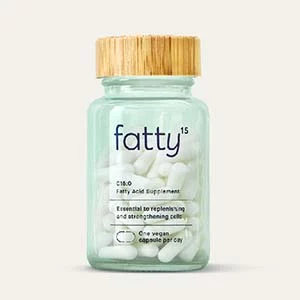When was the last time you didn’t feel tired? Not just “less tired than usual”, but full-force, mind-body, “I feel so alive!”-level energy? Some of us only experience it as a rarity. And others have forgotten it’s even a thing to be had.
Functional medicine doctor, Dr. Mark Hyman, is talking with us about why so many of us are always tired – and sharing nine science-backed ways to bring us back into mind-body balance…
Amidst juggling a hectic schedule, sleep deprivation, a fast-faster mentality, all while struggling with overall sluggish energy levels, caffeine has become our drug of choice. If you’re like most Americans, you’re probably “always tired” – running on empty by noon and inching towards that coffee shop or store that sells energy drinks is just around the corner.
Trust me – I know how that feels. As a young doctor, I became very ill with chronic fatigue syndrome (CFS). Every system in my body broke down. I was always tired to such an extreme I couldn’t even walk up the stairs. Mentally, I felt fuzzy. Every little thing felt like a Herculean effort. I had to fix myself so I could help others heal. Once I discovered functional medicine, I could design a plan for myself to heal my body and, subsequently, I helped others reclaim their energy levels.
Some of my patients arrive unable to manage their energy levels. They resort to sugar, caffeine, alcohol or worse crutches to manage their energy and moods. Many patients don’t connect their behaviors and choices with how they feel. They don’t connect their energy levels with how they eat, how well they sleep, how much they exercise, and how much time they spend connecting with friends and community. Instead of meditating or active relaxation, they spend time watching the news or browsing through social media.
Here’s the big secret that helped me heal, and the one
thing I fix to help my patients heal: To upgrade your energy levels, you need to upgrade your mitochondria.
Mitochondria are like tiny factories that turn food and oxygen into energy. Each cell has hundreds or thousands of these little energy factories. Active organs and tissues like your muscles, heart and brain have more mitochondria.
“If you want to improve your metabolism, mind your mitochondria,” I tell patients. After all, these little energy plants make energy out of the oxygen you breathe and the food you eat. If you want more energy, have better working mitochondria.
Of course, many things can go wrong with your mitochondria that impede your metabolism, making it run less efficiently or even shutting it down. In fact, mitochondria are very sensitive to damage. When they don’t work well, you struggle with all the miseries of low energy like fatigue, memory loss, pain and rapid aging. You needn’t succumb to fatigue when you optimize mitochondrial function.
First, let’s minimize things like toxins, infections, allergens and stress that damage your mitochondria. Want to know the biggest mitochondrial hijacker? Too many high-calorie, low-nutrient foods or too many “empty calories.” You see, when your mitochondria metabolize food with oxygen, they produce free radicals, which trigger a chain reaction of rusting or oxidation. Unless you have enough antioxidants, you can’t sufficiently protect those mitochondria from damage.
When you eat empty calories like sugar, flour and processed foods that don’t contain the antioxidants fruits and vegetables do, your body makes too many free radicals that tip the balance and start a chain reaction of cellular and tissue damage that destroys your mitochondria and your energy levels.
Fortunately, you have a lot of control over those mitochondria by the choices you make. You can do that in two ways: Prevent damage and optimize mitochondria. Here’s how.
Strategy #1: Prevent Mitochondria Damage
Ditch bad foods. You know the culprits: processed food, junk food, sugar, empty calories, artificial sweeteners, artificial colors and other chemical food additives. Their toxic effects can damage your mitochondria and prevent them from producing sufficient energy.
Lower inflammation. Chronic inflammation slowly destroys your organs and your mitochondria’s ability to work well. An anti-inflammatory diet contains lots of wild-caught fish, other omega-3 rich foods like walnuts and freshly ground flax seeds, along with lots of antioxidant-rich low-sugar fruits and vegetables.
Work with a functional practitioner. Lyme disease, hidden gut infections, heavy metal poisoning and adrenal fatigue can create problems like chronic fatigue syndrome and fibromyalgia. I had heavy metal poisoning. A functional medicine practitioner can get to the bottom of and reverse these and other issues.
Strategy #2: Boost and Protect Your Mitochondria
Eat real, fresh, whole foods. They come loaded with antioxidants and phytonutrients. I recommend 8 to 12 servings of fresh vegetables, fruits, beans, nuts, seeds, and gluten-free whole grains every day.
Take the right nutrients. Mitochondria-protective and energy-boosting nutrients include acetyl-L-carnitine, alpha-lipoic acid, coenzyme Q10, n-acetyl-cysteine, resveratrol and magnesium.
Step up your anti-inflammatory fats. Omega-3 fatty acids are essential fatty acids that help build your mitochondrial membranes. Cold-water fish like wild salmon, sardines and herring are good omega-3 fat sources, as are flaxseeds and omega-3 eggs. They strengthen the fragile cellular membranes that optimize your mitochondria.
Get good sleep. You can’t outsmart good sleep, and you know how even one night of bad sleep can zap your energy levels. Aim for seven to nine hours of solid sleep a night. Everything in your life will look and feel better. Learn more here.
Avoid energy-crashing drugs. Cut back or eliminate the ‘energy’ drugs like sugar, caffeine, and alcohol that ultimately create more harm than good. Think about taking a ‘drug holiday’ for six weeks.
Keep your purpose in mind. When I get off track, I simply remember what it’s like to feel great and what I need to do to get there. To optimize energy levels and feel your best, eat better, sleep more, exercise more and practice active relaxation such as meditation or deep breathing.
Always tired? Check out these pro-tips for getting better, deeper sleep and start to rest up… for real.















